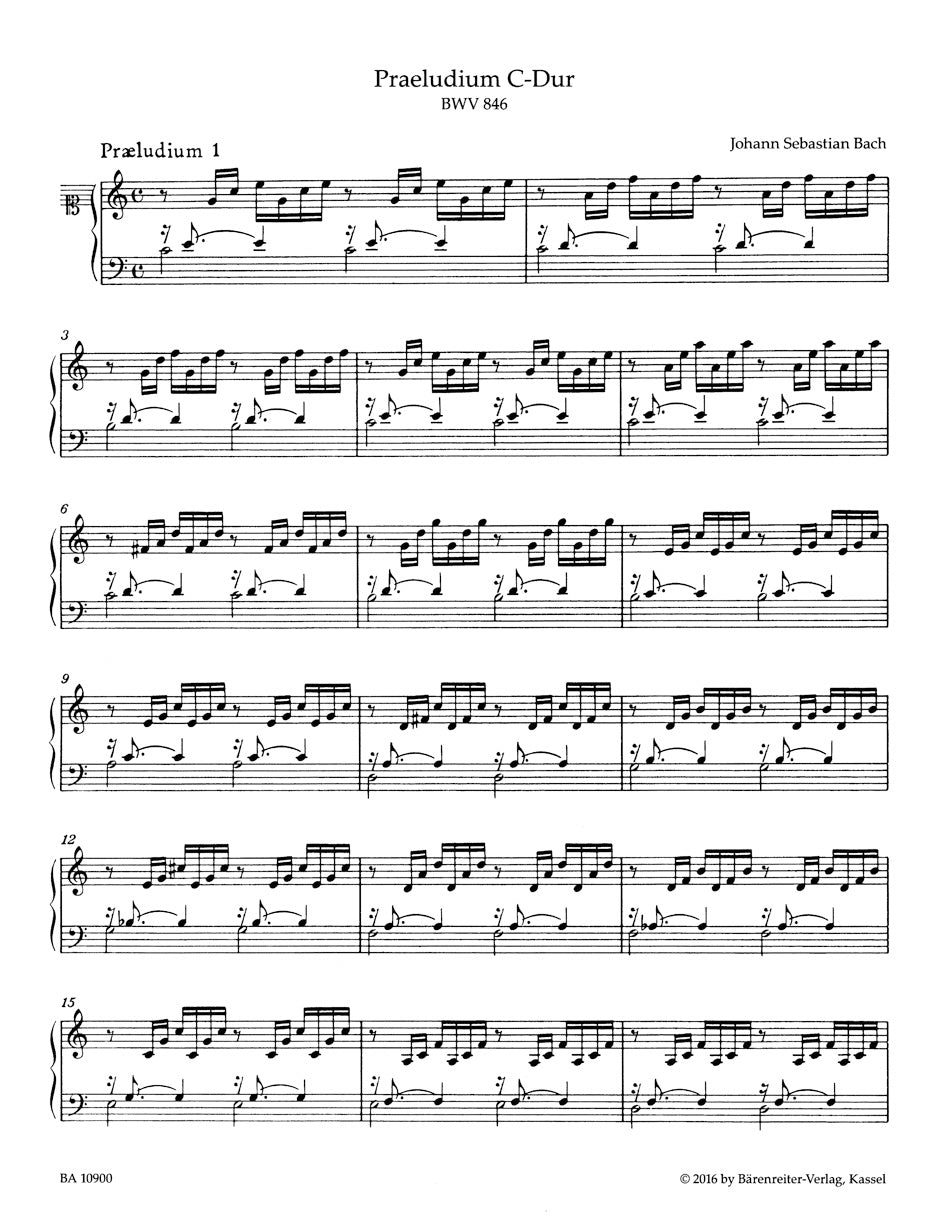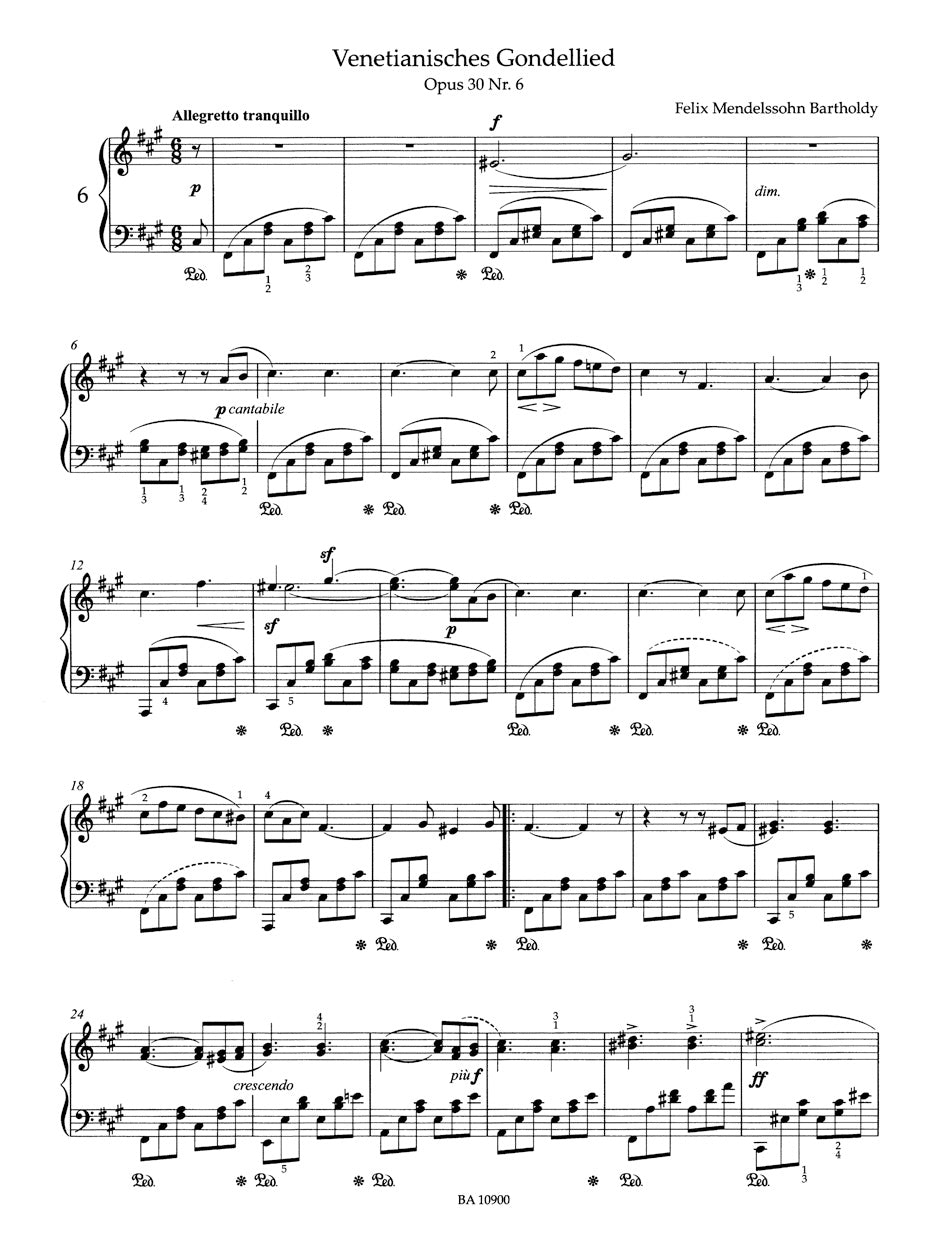Bärenreiter Piano Kaleidoscope
Expected to ship in about a week.
- Composers: Modest Mussorgsky (1839-1881), George Frideric Handel (1685-1759), Wolfgang Amadeus Mozart (1756-1791), Johann Sebastian Bach (1685-1750), Robert Schumann (1810-1856), Leopold Koželuch (1747-1818), Bedřich Smetana (1824-1884), Claude Debussy (1862-1918), Ludwig van Beethoven (1770-1827), Johannes Brahms (1833-1897), Leoš Janáček (1854-1928), Erik Satie (1866-1925), Franz Schubert (1797-1828), Erwin Schulhoff (1894-1942), Felix Mendelssohn (1809-1847)
- Instrumentation: Piano, Piano 4-Hands
- ISMN:
- Size: 9.6 x 12.2 inches
- Pages: 58
- Urtext / Critical Edition
Description
This album features a cross section of Bärenreiter's extensive piano catalogue. The pieces and movements range from the 18th century through to the first decades of the 20th century. During these approximately 200 years keyboard playing developed considerably and together with the unstoppable rise of the piano since the end of the 18th century, it became hugely popular. The fifteen composers who are represented in this edition have each, in their inimitable way, shaped the possibilities of sound and playing techniques of this instrument in their works. in our piano collection you will find compositions from the Baroque, Classical, Romantic and Early Modern eras. The pieces also vary in national style and range from low to high technical difficulty. An appetizer for Bärenreiter's Urtext editions – give it a try!
Works:
- Bach: Prelude in C Major, BWV 846a
- Satie: Gymnopédies (1888)
- Schubert: Allegretto in C Minor, D 915
- Brahms: Waltz in B Minor, No. 11 from 16 Waltzes (Simplified Version for Solo Piano), Op. 39
- Janáček: V mlhách (In the Mists), JW VIII/22
- Debussy: The Little Shepherd
- R. Schumann: Album for the Young (Album for die Jugend), Op. 68
- Satie: En plus from 3 Morceaux en forme de Poire (1903)
- Mendelssohn: Allegretto tranquillo in F-sharp Minor (Venetian Gondola Song), MWV U 110, Op. 30, No. 6
- Mozart: 1st movement (Allegro) from Piano Sonata No. 16 in C Major ("Facile"), K. 545
- Bach: Prelude and Fugue in D Minor, BWV 851
- Beethoven: Piano Sonata No. 14 in C-sharp Minor ("Moonlight"), Op. 27, No. 2
- Mussorgsky: Tuilleries No. 3 from Pictures at an Exhibition, Op. 11
- Brahms: Albumblatt, A. deest
- Handel: Sonatina in D Minor, HWV 581
- Schubert: Hungarian Melody in B Minor, D 817
- Debussy: Des pas sur la neige
- Koželuch: 1st Movement from Piano Sonata No. 43 in E-flat Major, Op. 53, No. 3
- Schulhoff: Blues. No. 4
- Mendelssohn: Allegro non troppo in G Major, MWV U 171, Op. 72, No. 1
- Smetana: No. 1 in E-flat Major from Tři poetické polky (3 Polkas poétiques), JB 1:61, Op. 8
- R. Schumann: Abschied (No. 9) from Waldszenen (Forest Scenes), Op. 82
Publishers use a lot of words to describe what they sell, and we know it can be confusing. We've tried to be as clear as possible to make sure you get exactly what you are looking for. Below are descriptions of the terms that we use to describe the various formats that music often comes in.
Choral Score
A score for vocalists that only contains the vocal lines. The instrumental parts are not there for reference. Generally, cheaper than a vocal score and requires multiple copies for purchase.
Facsimile
Reproductions of the original hand-written scores from the composer.
Full Score
For ensemble music, this indicates that the edition contains all parts on a single system (there are not separate parts for each player). In larger ensembles, this is for the conductor.
Hardcover
Hardbound. Generally either linen-covered or half-leather.
Orchestral Parts
Similar to a wind set, this is a collection of parts. In the case of strings, the numbers listed are the number of copies included, though generally these are available individually (often with minimum quantities required).
Paperback
When publishers offer multiple bindings (e.g. hardcover) or study scores, this is the "standard" version. If you're planning to play the music, this is probably what you want.
Performance / Playing Score
A score of the music containing all parts on one system, intended for players to share. There are not separate parts for each player.
Set of Parts
For ensemble music, this indicates that there are separate individual parts for each player.
Solo Part with Piano Reduction
For solo pieces with orchestra, this is a version that contains a piano reduction of the orchestra parts. For piano pieces, two copies are typically needed for performance.
Study Score
A small (think choral size) copy of the complete score meant for studying, and not playing. They make great add-ons when learning concertos and small chamber works.
Vocal Score
A score prepared for vocalists that includes the piano/organ part or a reduction of the instrumental parts.
Wind Set
For orchestral music, this is a collection of wind and percussion parts. The specific quantities of each instrument are notated.
With Audio
In addition to the printed music, the edition contains recordings of the pieces. This may be an included CD, or access to files on the internet.
With / Without Fingering (Markings)
Some publishers prepare two copies - a pure Urtext edition that includes no fingering (or bowing) suggestions and a lightly edited version that includes a minimal number of editorial markings.





